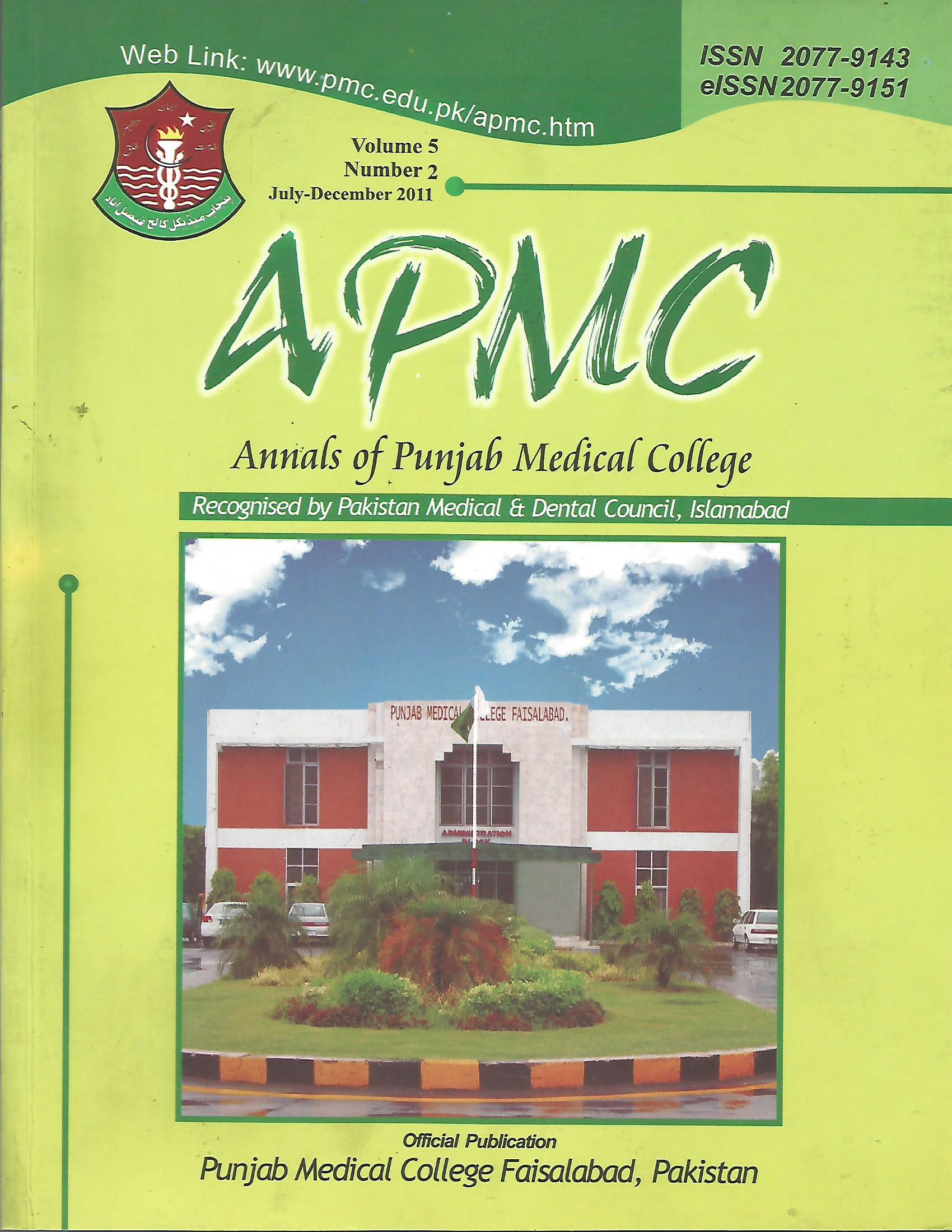Diagnosis and Management of Congenital Anomalies of Vagina
Abstract
Objective: To create awareness by presenting case series of congenital anomalies of the vagina, their diagnosis and management. Design: Interventional case series. Setting: Allied Hospital PMC Faisalabad. Materials and Methods: 18 patients with vaginal anomalies were reviewed between March 2008 and February 2011. Patients were evaluated by symptoms, physical examination and investigations. After management they were followed up to a period of minimum 3 months to a maximum of 2 years. Main Outcome Measures: Improvement in symptoms, creation of vagina with at least a 3-5cm in width leading to perfection of sexual life and fertility. Interventions: were done in 16 (88.88%) cases of transverse and longitudinal vaginal septum, imperforate hymen and absent vagina. Transverse vaginal septum and longitudinal septum was removed, imperforate hymen incised and no postoperative contractures occurred. Mayer-von Rokitansky-Küster-Hauser’s Syndrome (MRKH) was managed by non surgical method. While absent vagina and cervix with functioning uterus was treated with abdominal hysterectomy followed by vaginoplasty and absent vagina with rudimentary/hypo.plastic uterus treated with vaginoplasty. Results: 7(38.88%) cases of vaginal septum, 4(22.22%) cases of imperforate hymen, 1 (5.55%) case of vaginal atresia with absent cervix and functioning uterus,1(5.55%) hypo plastic uterus with absent lower vagina were operated for creation of vagina. Functioning vagina with a minimum of 4-5cm width in the former area of the septum and atretic vagina was created. 3(16.66%) longitudinal vaginal septum were operated during labor, a satisfactory sexual life was reported by all except in one of the group. We achieved 88.23 %( 15/17) successful results. While 1(5.55%) cases of absent uterus and vagina in non Inter- vented group did not follow back. Conclusion: Congenital anomalies of the vagina have long term impact on patient sexual and reproductive life. New born girls must be examined for vaginal defects initially so that investigations could be arranged for further abnormalities such as upper mullerian duct and renal tracts.

 This work is licensed under a
This work is licensed under a 